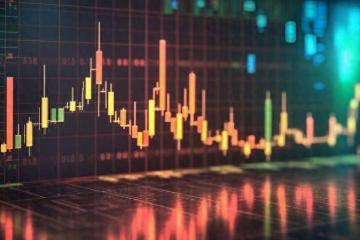Nine Currency ETFs in Total Silence All Day!
Advertisements
In recent weeks, the financial landscape related to currency Exchange Traded Funds (ETFs) in China has experienced significant turmoilThis turbulence, marked by a suspension of trading for nine specific currency ETFs, has captured the attention of investors and analysts alikeThe freeze, which began just before the Lunar New Year and extended into the post-holiday trading sessions, is underscored by unprecedented price disparities between the ETFs' trading values and their net asset valuesSuch a situation prompts a deeper investigation into what led to this scenario and its implications for investors.
On February 5, a collective announcement from an array of funds including the Huatai Tianjin Gold ETF brought to light the decision to halt trading entirelyThe reasoning? A concerning pattern of inflated trading prices outside the realms of reasonable value alignment, creating a growing gap between market prices and the corresponding net asset values
Advertisements
This discrepancy is often referred to as "premium" in financial jargon and can signal underlying market instabilities.
This pricing phenomenon is not new; in fact, it had been brewing since late JanuaryOn January 27, the last trading day prior to the Lunar New Year, the same nine ETFs initially halted trading due to similar concernsData from Wind, a prominent financial information provider, showed that multiple currency ETFs were facing premium rates that had ballooned; on that particular day, some ETFs were trading at an alarming premium of up to 17 percentThis scenario raises red flags about market behaviors and investor psychology during periods when pricing anomalies occur.
Among the ETFs that faced suspensions on February 5 were notable funds such as HuAxis Daily Xin, GF Currency, Guarantors Anbao Currency, and othersThese funds serve as benchmarks in the currency market, catering to investors seeking stability and liquidity
Advertisements
A prime example of the disruption experienced is HuAxis Daily Xin, which reported that its trading price exhibited a significant premium compared to its net asset value, leading to a precautionary halt in trading hours on February 5, emphasizing the need to protect investors’ interests.
The urgency expressed in their announcements warned investors about the inherent risks linked to trading prices that exhibit such significant premiumsThe management advised all stakeholders to remain vigilant and informed; blind investments, they cautioned, could lead to substantial financial lossesThe health of the market hinges not just on the performance of these ETFs but also on the broader economic environment, which includes systemic risks, liquidity constraints, and fundamental supply and demand dynamics.
In their risk advisories, the fund managers highlighted another layer of caution pertaining to potential future trading behavior
Advertisements
If premiums persisted, they hinted at the possibility of seeking further suspensions during trading hours with the intent of signaling to the market to address the risks involvedWhile this may seem like a prudent step, it raises the question of how such reactive measures can impact investor confidence and market liquidity moving forward.
The recent volatility can be traced back to pre-Lunar New Year activities, specifically to January 24, when multiple currency ETFs experienced a surge, with several even reaching daily limitsThe next trading day saw nine funds opt for a temporary suspension, which, while short-term, was a clear indication of market sensitivity to value discrepanciesHowever, while the prior suspensions were lifted within half a day, the February pause indicated a more profound concern regarding the stability and consistency of pricing.
The insights from industry leaders, such as Huatai Securities Asset Management, acknowledged that the trading suspension's primary aim was to fundamentally protect investors
- Investing in A-Shares the Bogle Way
- Warning: The U.S. May Face Inflation
- UK Treasury Gold Sold at Discount
- Longi Green Energy: Profit Plunges to $8 Billion Loss
- Dow Jones Rises Consecutively
They noted that the volatility in currency ETFs often stems from trade behaviors, transaction volumes, and circulating supplyThere is a growing concern that such premiums might not only present substantial investment risks but could also lead to a wider implications across the trading ecosystem.
Echoing this sentiment, analysts from CITIC Securities emphasized that many of the contested currency ETFs are relatively small in scale, and the minor influx or withdrawals of capital could disproportionately affect their market pricesThis is particularly salient when examining that newly adjusted rates for these currency funds yielded an approximate annualized seven-day return of about 1.5%. In contexts where speculative capital flows are involved, the risk of inflated trading prices rises significantly, urging caution among investors.
Statistical analysis reveals that the current market features a total of 27 currency ETFs, where only a few have substantial assets under management

Examples of larger funds include Huabao Cash Enhancement A and Yinhua Daily A, with sizeable assets in the hundreds of billions, while several lesser-known ETFs dramatically underperform with market caps below a billionThe stark contrast in asset sizes sets the stage for potential volatility; it is precisely these smaller, less liquid funds that experienced dramatic trading swings during January.
Simplistically put, the backdrop of this upheaval is influenced by a broader economic landscape wherein policy rates have been adjusted downwards, resulting in a steady decline in currency fund yieldsFor instance, Tianhong Yu'ebao saw its seven-day annualized yield plummet to an all-time low of 1.186% recentlyThis has led to a temporary uptick in demand for cash management products ahead of the Lunar New Year, followed by a recent stabilization around an average yield of 1.5% for larger funds.
The root of the turmoil, therefore, becomes clearer when examining the rare trading changes before the holiday
Leave A Comment